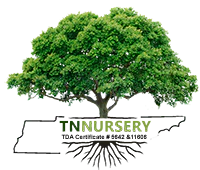Staghorn Sumac
The staghorn sumac is a fast-growing, winter-hardy ornamental, which is often cultivated for its brilliant autumn foliage and showy fruit. This shrub flowers from May through July, producing terminal patches of small, greenish-white to yellow flowers, after which point it will produce fuzzy, bright-red berries, which ripen from June through September. In winter, the stout, hairy twigs of this shrub have often been compared to deer antlers covered in velvet, from which it receives its alternate common name.
The Ornamental Tree Is Drought-Tolerant
It does best in full sun to part shade and typically ranges from USDA zones 3 through 8. It can reach up to 30 feet. This tree is drought-tolerant and capable of growing in locations and soil types that other plants may not tolerate, including poor and dry soils. Improperly drained soils, however, will negatively impact its growth. Generally, cultivators rarely encounter few issues with either pests or disease, when raising this shrub.
It Helps Control Soil Erosion
Due to its suckering habit, it is best grown in informal and naturalized areas, such as open woodland areas or wood margins, where it can be spread and form colonies. Suckering shrubs like this one can be used to control soil erosion, thanks to their complex root systems, and are especially effective when massed on slopes.
Get Staghorn Sumac Today At Garden Plant Nursery
It provides special benefits to local wildlife, as its berries persist from late summer through spring and are a preferred food source for many species during the winter, including several varieties of woodland and songbirds. Their flowers attract honeybees, in the spring, and these insects are also able to use materials from the shrubs in construction. The berries of the staghorn sumac can be harvested and used to prepare a type of pink lemonade, often called "Indian lemonade," while all parts of this sumac, excepting its roots, may be used to produce a natural dye.
















































